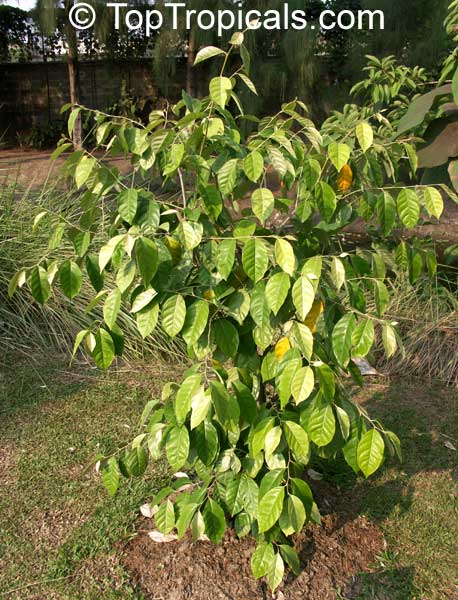Croton tiglium (Croton Oil Plant)
Top Tropicals Plant Encyclopedia
Botanical name: Croton tiglium
Common name: Croton Oil Plant
Family: Euphorbiaceae
Origin: Southeast Asia







Native to Southeast Asia, Croton tiglium (Croton Oil Plant) is a small tree or shrub with a few spreading branches. It grows to a height of 2-5 ft and has alternate petiolate leaves which are ovate, acuminate, serrate, smooth, and dark green on the upper surface and paler underneath. The leaves are usually furnished with two glands at the base. Flowers in erect terminal racemes, scarcely as long as the leaf, the lower female, upper male, and with straw-colored petals.
The Croton Oil Plant will grow best when it has full sun and some semi-shade. It needs regular water and with moderate water, it will thrive. It is best grown in USDA Zone 9-11. In cold climates, it is best to grow it in a pot to better protect it from the elements.
Aside from being an ornamental plant, the Croton Oil Plant is also an ethnomedical plant and its oil is obtained by expression from the seeds previously deprived of the shell. It has been used over centuries to treat skin disorders, wounds, and it is used in traditional Chinese medicine. However, due to the poisonous or toxic nature of the plant, it should be handled with care and caution.
